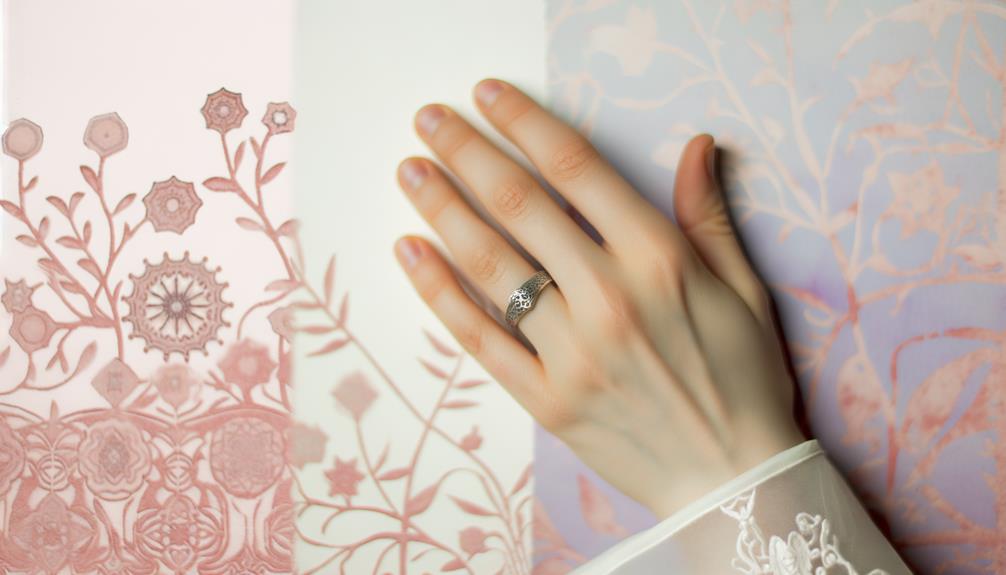Pinky Name Meaning in English
The name 'Pinky' derives from the Dutch word 'pink,' meaning 'small finger.' Introduced into English in the 17th century through Dutch-English interactions, 'Pinky' historically denotes the smallest finger on the hand. It symbolizes delicacy, finesse, and promises in various cultures, including the pinky swear signifying trust.
The term gained prominence in the 19th century and continues to influence cultural practices, such as pinky rings denoting status. Figures like Pinky Lee and the character Pinky from 'Pinky and the Brain' illustrate its cultural significance.
To appreciate the full scope of 'Pinky,' its nuanced evolution across diverse contexts is essential.

Key Takeaways
- The name 'Pinky' originates from the Dutch word 'pink,' meaning 'small finger.'
- 'Pinky' was anglicized from 'pink' during the 17th century cultural exchange between Dutch and English speakers.
- It symbolizes delicacy, finesse, and bonds across various cultures.
- The term 'pinky' emerged in the 19th century and has maintained its diminutive connotation.
- Modern interpretations include fashion statements and digital communication usage.
Historical Origins
The name 'Pinky' finds its historical origins in the Dutch word 'pink,' meaning 'small finger,' which was later assimilated into English-speaking cultures. This etymological shift occurred during the early interactions between Dutch and English speakers, particularly in the maritime and trade sectors of the 17th century.
The term 'pink' was used to denote the smallest finger on the human hand, a usage that was subsequently adopted and anglicized as 'pinky.' The linguistic transformation showcases how language adapts through cultural exchange and practical necessity.
Understanding this origin provides insight into the fluid nature of language and how specific terms can traverse geographies and epochs, embedding themselves into common vernacular with altered yet traceable meanings.
Cultural Significance
Widely recognized across various cultures, the term 'pinky' has accrued diverse symbolic meanings, ranging from notions of delicacy and finesse to associations with promises and bonds. Historically, the pinky finger has been emblematic of subtlety and precision. Linguistically, the term traces its roots to the Dutch word 'pink,' meaning small finger, emphasizing its diminutive nature. Culturally, the pinky has borne significant symbolic weight:
- Pinky Promises: A gesture of unwavering trust and commitment.
- Noble Significance: In Japanese culture, the pinky signifies a pledge of honor.
- Fashion Statements: Pinky rings have historical connotations of status and fashion.
- Gestural Communication: In some cultures, the pinky is used for non-verbal communication.
These varied meanings underscore the pinky's rich cultural tapestry.
Popularity Over Time
Charting the pinky finger's popularity over time reveals a fascinating evolution interwoven with historical events, cultural shifts, and linguistic adaptation. Initially, the term 'pinky' emerged in the 19th century, derived from the Dutch word 'pink,' meaning small.
The pinky finger's role in social customs, such as the pinky swear or symbolic gestures, has fluctuated, influenced by societal norms and global interactions. During the Victorian era, the pinky ring became a status symbol.
In recent decades, digital communication and media have revived and reshaped the term's usage, reflecting contemporary culture's influence. Linguistically, 'pinky' has maintained its diminutive connotation, yet its symbolic significance has continually adapted to reflect prevailing cultural contexts.
Modern Interpretations
In contemporary culture, the pinky finger's significance has evolved, encompassing both traditional practices and modern symbolic interpretations. Historically, the pinky has been associated with social etiquette, such as the pinky promise, a gesture signifying trust and commitment. In modern contexts, its symbolism has expanded, reflecting diverse cultural influences and contemporary practices.
Key modern interpretations include:
- Fashion Statement: Wearing rings on the pinky finger can denote style and individuality.
- Communication: In some cultures, extending the pinky can symbolize a small or insignificant amount.
- Gang Affiliation: Certain groups use pinky rings to signify membership.
- Technology: The pinky is essential in smartphone usage, often stabilizing the device during texting.
Thus, the pinky has garnered a multifaceted role in modern society.
Famous Namesakes
Renowned for their distinctive monikers, numerous individuals throughout history and contemporary culture have borne the name 'Pinky,' each contributing uniquely to their respective fields.
Pinky Lee, an influential figure in early American television, captivated audiences with his energetic performances as a children's show host in the 1950s.
In the domain of animation, the character Pinky from the acclaimed series 'Pinky and the Brain' remains an iconic figure, known for his humorous and endearing nature.
Additionally, Pinky Tomlin, a notable musician and actor from the early 20th century, left a lasting legacy in the entertainment industry.
These namesakes exemplify the versatility and cultural resonance of the name 'Pinky,' underscoring its enduring appeal across various domains.
Conclusion
The name 'Pinky,' like a small gem, reflects a rich tapestry of historical origins, cultural significance, and evolving interpretations. Its journey from ancient roots to contemporary usage illustrates the dynamic interplay between language and society.
The varied popularity over time and the presence of notable figures bearing the name underscore its enduring resonance. Essentially, 'Pinky' serves as a linguistic artifact, encapsulating both tradition and modernity within its brief yet vibrant etymological history.






